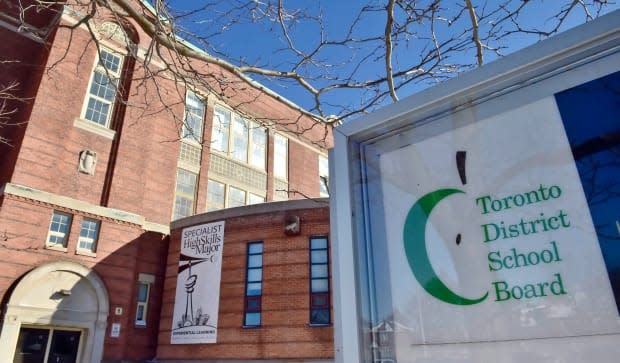'Quadmesters' for teens and no sports: Reopening plans for Toronto public schools revealed

Families with children in Canada's largest school board are getting a glimpse of what learning could look like during the COVID-19 pandemic once students return to class in September.
The Toronto District School Board has published a final report with details about the upcoming academic year that will be considered by trustees before it is submitted to the Ontario Ministry of Education.
All of the province's 72 publicly-funded school boards are required to have their individual plans for safely reopening in the fall ready to hand over to the ministry soon.
The biggest changes in the TDSB will be for secondary students.
WATCH | Balancing safety, education for Ontario high school students:
Teens will be in class for part of the school day on alternating days. For the remainder of each school day, students will be in online classes or doing work independently at home.
The school year will be broken into "quadmesters." Instead of two semesters, there will be four semesters of 44 or 45 days each, with two or three additional days for exams in each one.
Secondary students will take two classes per quadmester, in cohorts of about 15. Teachers will teach a single class and a cohort will be assigned to them.
Given current class size limits for high schools, the TDSB does not foresee "significant cohort size issues" in the fall, the report says.
The TDSB is one of 24 urban and suburban school boards — along with those in relatively populous places like Peel, Halton, York and Durham — that the ministry has chosen to use as an adapted model for high schools, meaning some combination of in-person and remote learning.
The timetable outlined by the TDSB will maximize face-to-face time with teachers, the report adds.
According to an original plan posted online, the TDSB had high schoolers doing half-days five days per week instead of alternating days, and then that was changed by board staff.
Meanwhile, elementary students in all publicly funded school boards in Ontario will be in class five days per week, as will secondary students in areas with relatively lower enrolment figures.
No lockers, no sports
The TDSB also details other measures it will take to curb any potential transmission of the novel coronavirus and limit unnecessary interactions among students, as well as with staff.
First, it will implement the ministry requirement of masks for all students between Grades 4 and 12. Non-medical masks will be provided to students and staff if they don't have one of their own. As per the ministry's guidance, younger students will be encouraged, but not required, to wear a mask or cloth face covering while in school.
Students will not be able to use their lockers, and there will be no organized sports until Ontario's chief medical officer of health, Dr. David Williams, explicitly says they can proceed.
"Once there is some easing of restrictions that enable certain activities to open within the orders of the [Medical Officer of Health], plans for resumption can be tabled," the report says.
"This is not a return to normal, but rather to a 'new normal' which will require everyone to modify their behaviour, stay informed, apply protective measures and follow public health advice and individual sport associations' recommendations."
Physical distancing measures
The board also says that it will take steps to allow for physical distancing between students "to the maximum extent possible," but acknowledges it will not be possible in all circumstances.
There will also be stickers on hallway and bathroom floors to facilitate one-way traffic flow.
While the Ministry of Heath guidelines allow for elementary school class sizes to remain at pre-COVID-19 levels — up to 30 children in kindergarten; no more than 20 in Grades 1 to 3; and an average of 24.5 for Grades 4 to 8 — the TDSB says it will work to keep classes as small as possible.

Elementary students will have recess and eat lunch with the same cohort every day. Teens will not eat lunch at their high schools.
"Direct and indirect contacts in schools for elementary students should be limited to approximately 50 and for secondary students should be limited to approximately 100," the report indicates.
The board expects that its COVID-19 safety measures will cost about $22.5 million within the first four months of the academic year.
More granular details will be provided to families and school staff in the coming days weeks, the TDSB says.

